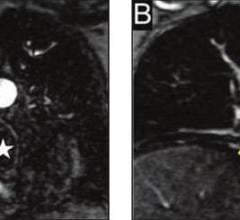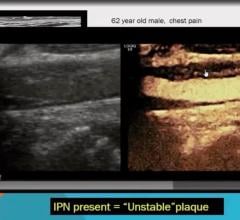June 12, 2008 - There is a lack of universally applied standards for administering radiopharmaceutical doses to children undergoing nuclear medicine examinations, according to results of a recent survey of 13 pediatric hospitals in North America that was published in the June issue of The Journal of Nuclear Medicine.
“Modern nuclear medicine procedures are sensitive, minimally invasive, painless and safe and thus well suited for the evaluation of pediatric patients. They provide a wealth of unique and useful information that can be used to diagnose and treat many diseases of childhood,” said S. Ted Treves, M.D., chief of the Division of Nuclear Medicine at Children’s Hospital Boston and professor of radiology at Harvard Medical School.
In nuclear medicine, there are well-established guidelines for administering radiopharmaceutical doses for adults. However, Dr. Treves stated, “At this time, the majority of radiopharmaceutical package inserts do not provide guidance on pediatric doses. In imaging children, physicians typically base dosages on the patient’s body weight, the nature and the type of problem being investigated, the equipment available and their own experience. This has led to the variations in dosage that currently exist.”
This approach, however, may result in the smallest patients receiving a dose that is too small to produce adequate results. Also, according to experts, radiopharmaceuticals are handled differently in infants and young children. For example, circulation time in newborns is faster than it is in adult patients. These and other kinetic and metabolic differences can make a difference in the doses children require. The wide range of disorders, body sizes, stages of development, and level of patient cooperation require customized approaches to dosimetry and to the various imaging techniques that are used in making a diagnosis.
“This survey identifies a very important question—what are the lowest radiopharmaceutical dosage levels that are compatible with quality imaging in children?” said Dr. Michael Gelfand, M.D., president of SNM’s Pediatric Imaging Council. “Over the last few years, the imaging community successfully tackled the problem of computed tomography (CT) absorbed radiation doses that, in many cases, were higher than required for quality imaging. Although nuclear medicine scans are performed less frequently than CT scans and generally involve much less radiation, this report has identified a question that needs attention. As a result, the nuclear medicine community has begun to address the radiopharmaceutical dosage question by forming a work group composed of members of the Pediatric Imaging Council and the Society for Pediatric Radiology who practice nuclear medicine. This group will examine administered dosages and come up with recommended radiopharmaceutical dosages over the next year.”
When a nuclear medicine procedure is appropriately administered, the benefits to the patient far outweigh any potential risks associated with the radiation. The risk from exposure to small amounts of radiation is very small. The need to reach a consensus on pediatric-administered doses is therefore of utmost importance and forms the central impetus for this critical survey.
“This report provides the data and incentive needed to work toward establishing radiopharmaceutical administration guidelines for pediatric molecular imaging patients. We will be working with the study investigators, the SNM community and the FDA to help establish such guidelines,” said George Sgouros, Ph.D., vice-chairman of SNM’s Medical Internal Radiation Dose (MIRD) Committee.
In an effort to document pediatric radiopharmaceutical doses among a group of pediatric hospitals, Dr. Treves and his co-authors designed a survey consisting of 16 pediatric nuclear medicine examinations. Survey participants were asked to report the minimum and maximum administered activities for each exam as well as the administration schedule based on body weight. From these data, the authors computed minimum, maximum, median and mean values for each procedure, which confirmed what the authors long suspected: Among the institutions surveyed, the administered doses varied widely, with the greatest disparity noted in the smallest patients for levels of minimum total administered activity.
The study authors recommend establishing guidelines that balance the need for high-quality image resolution and low radiation exposure with each child’s unique profile. “High doses that do not result in improved diagnostic accuracy, or conversely, low doses that do not permit adequate examination, should both be considered unnecessary radiation exposures,” said Treves. “This is why it is critical that pediatric radiopharmaceutical doses be determined by the minimal amount necessary to ensure satisfactory examinations.”
The authors say their findings suggest a clear need to achieve some level of standardization by reaching a broader consensus on pediatric radiopharmaceutical dosimetry. They hope to stimulate a dialogue within the pediatric nuclear medicine community that will ultimately lead to the establishment of guidelines for administered radiopharmaceutical doses in children that rely on the most current instrumentation, imaging processing techniques and computer technologies.
Other recommendations include utilizing new image-processing techniques that have emerged in the last few years that offer advantages over older methods by generating images of vastly improved quality that provide diagnostic information with lower administered radiopharmaceutical doses. The authors are presently applying these new techniques to a variety of tests.
“It is time to take a fresh look at pediatric nuclear medicine dosimetry and an opportunity to reach consensus. There is a need to optimize minimum dosing activity without sacrificing image quality,” said Treves. “Nuclear medicine has become indispensable to the diagnosis and treatment of pediatric disorders, especially with its safe and largely non-invasive procedures that produce critical diagnostic information exposing the patient to very small levels of radiation—an extremely important consideration in imaging children.”
Co-authors of “Administered Radiopharmaceutical Doses in Children: A Survey of 13 Pediatric Hospitals in North America” include Royal T. Davis, CNMT, RT(N), technical director, and Frederic H. Fahey, D.Sc., director of nuclear medicine physics, both at Children’s Hospital in Boston, Mass.
For more information: www.snm.org


 August 17, 2023
August 17, 2023 







